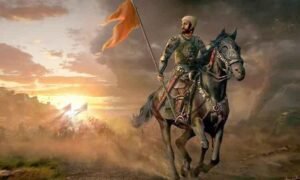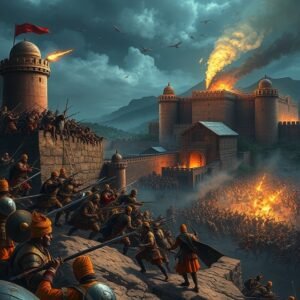The Kingdom of Magadha, located in present-day Bihar in India, holds immense significance in ancient Indian history due to its strategic position along the Ganges River and its role in shaping early Indian political history. Over centuries, Magadha became the cradle of several dynasties, religions, and empires, influencing the political and cultural landscape of the Indian subcontinent.
This article explores the rise and legacy of Magadha, covering its dynasties, major contributions, and its profound impact on the subcontinent.
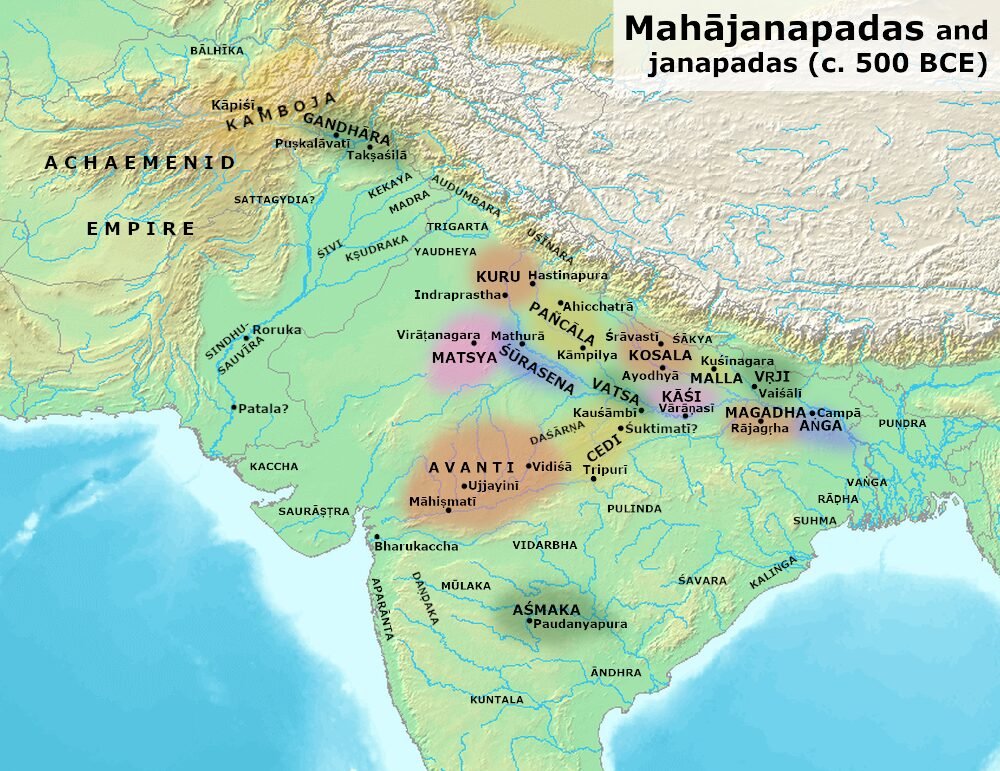
Historical Background of Magadha
The Kingdom of Magadha dates back to the 6th century BCE during the era of the Mahajanapadas—the 16 great republics of ancient India. Positioned strategically along the Ganges River, Magadha became a dominant force in Indian politics, culture, and religion over the centuries.
1. Early Dynasties of Magadha (c. 1700 BCE – 684 BCE)
Magadha’s origins as a powerful kingdom are shrouded in myth, legend, and early Vedic traditions. The kingdom is mentioned in ancient texts such as the Atharvaveda and the Mahabharata, where Magadha appears as a key power in the eastern Gangetic plains.

The Brihadratha Dynasty (c. 1700 BCE – 684 BCE)
This is considered one of the earliest dynasties ruling Magadha. According to the Puranas and other early texts, Brihadratha, the founder, established the dynasty and ruled a relatively small but influential kingdom. Magadha during this period was not yet a formidable power and was primarily agrarian, though trade routes passing through the kingdom helped its rise.
Key Developments:
- The political structure was centered around small chiefdoms and chieftains.
- The culture was heavily influenced by Vedic traditions and rituals, with Brahmanism playing a significant role in governance.
2. The Haryanka Dynasty (c. 684 BCE – 413 BCE)
The rise of the Haryanka Dynasty marked the true beginning of Magadha as a major power in the subcontinent. Under this dynasty, Magadha saw substantial political consolidation and territorial expansion.
Notable Kings:
- Bimbisara (c. 558 BCE – 491 BCE): A dynamic and strategic ruler, Bimbisara is often credited with laying the foundations of Magadha’s dominance. He expanded Magadha’s territory through alliances, marriages, and conquests, annexing Anga to the east.
- Ajatashatru (c. 491 BCE – 461 BCE): Ajatashatru, Bimbisara’s son, played a critical role in strengthening Magadha’s military might. He conquered the Lichchhavis of Vaishali and fought wars with neighboring kingdoms like Kosala, further expanding Magadha’s influence.
Key Developments:
The fortification of Rajagriha, which became the first capital of Magadha. Expansion of the Magadhan army with chariots, elephants, and infantry, making it a formidable power. Patronage of Buddhism and Jainism, making Magadha a cultural and religious center.
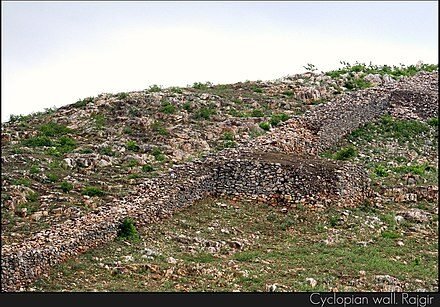
3. The Shishunaga Dynasty (c. 413 BCE – 345 BCE)
After the decline of the Haryanka dynasty, the Shishunaga dynasty came to power, continuing Magadha’s expansion and dominance.

Shishunaga (c. 413 BCE – 395 BCE):
Shishunaga, the founder, was initially a viceroy under the Haryankas and seized power after a civil uprising. He shifted the capital from Rajagriha to Pataliputra (modern-day Patna), a more strategically located city on the Ganges.
Kalashoka (c. 395 BCE – 367 BCE):
Also known as Kakavarna, Kalashoka oversaw the second Buddhist council at Vaishali, continuing Magadha’s religious significance. The Shishunaga dynasty saw relative peace and stability compared to its predecessors.
Key Developments:
Relocation of the capital to Pataliputra, which remained the center of political power in India for centuries.
Stabilization of Magadha’s borders after earlier periods of expansion.
4. The Nanda Dynasty (c. 345 BCE – 322 BCE)
The Nanda dynasty represented the peak of Magadha’s pre-Mauryan power, ruling one of the wealthiest and most extensive kingdoms in Indian history.

Mahapadma Nanda (c. 345 BCE – 329 BCE):
Mahapadma Nanda, the founder of the dynasty, is often called the “destroyer of all Kshatriyas” due to his aggressive conquests. Under his leadership, Magadha extended its territory across much of northern India, making it a vast empire. The Nandas accumulated great wealth, and their reign was characterized by significant administrative reforms.
Key Developments:
A powerful central administration with heavy taxation, enabling Magadha to maintain a large standing army. The Nandas employed elephants and cavalry in warfare, creating one of the largest armies of the time (allegedly over 200,000 soldiers). Urbanization of Pataliputra continued, making it a thriving economic hub.
5. The Maurya Dynasty (c. 322 BCE – 185 BCE)
The rise of the Mauryan Empire under Chandragupta Maurya signified the beginning of one of the greatest empires in Indian history. The Maurya dynasty transformed Magadha into the core of a pan-Indian empire.
Chandragupta Maurya (c. 322 BCE – 297 BCE):
With the help of Chanakya (Kautilya), Chandragupta overthrew the Nanda dynasty and established the Mauryan Empire. Chandragupta unified large parts of India, stretching from modern Afghanistan in the west to the eastern parts of India. The Arthashastra, written by Chanakya, outlines the administrative and economic policies that shaped Maurya rule.
Bindusara (c. 297 BCE – 273 BCE):
Bindusara, Chandragupta’s son, expanded the empire further south, incorporating much of the Deccan into the Mauryan fold.
Ashoka the Great (c. 273 BCE – 232 BCE):
Ashoka is one of India’s most celebrated emperors, especially after his conversion to Buddhism following the Kalinga War. He embraced non-violence, spread Buddhism across Asia, and erected Ashokan pillars with inscriptions advocating for moral governance and dharma.

Key Developments:
Centralized bureaucracy and development of a sophisticated administrative apparatus. Promotion of trade, agriculture, and commerce across the empire. Spread of Buddhism not only in India but throughout Asia, cementing Magadha’s cultural legacy.
6. Post-Mauryan Dynasties (c. 185 BCE – 550 CE)
The Shunga Dynasty (c. 185 BCE – 75 BCE):
After the fall of the Mauryan Empire, the Shunga dynasty, founded by Pushyamitra Shunga, ruled Magadha. The Shungas restored Hinduism’s dominance, pushing back against the Buddhist influence from Ashoka’s reign.

The Kanva Dynasty (c. 75 BCE – 30 BCE):
The Kanva dynasty succeeded the Shungas, though it had a relatively short reign. Magadha during this period saw political instability and fragmentation.
Gupta Empire (c. 240 CE – 550 CE):
The rise of the Gupta Empire under Chandragupta I in the 4th century CE marked a new golden age for Magadha. Under the Guptas, especially during the reigns of Samudragupta and Chandragupta II, Magadha again became a center of political and cultural power. The Gupta period is often referred to as the Golden Age of India due to significant advancements in art, science, and philosophy.
7. The Decline of Magadha (6th Century CE and Beyond)
By the 6th century CE, Magadha’s political importance began to wane. The decline of the Gupta Empire and the rise of regional powers like the Harsha Empire and later the Pala Dynasty diminished Magadha’s influence.
Key Factors in Decline:
Invasions from the west, particularly the Huns, weakened the region. Internal fragmentation and the rise of feudal states reduced centralized authority. The shifting of political capitals and trade routes away from Pataliputra.
By the 12th century, Magadha ceased to be a dominant political entity. However, its historical legacy, especially as the heart of the Mauryan Empire and a center of Buddhist learning, continued to influence the Indian subcontinent for centuries to come.
The Enduring Legacy of Magadha
Magadha’s influence in shaping the political and cultural landscape of India is undeniable. From its early role in Indian politics to being the cradle of Buddhism and Jainism, Magadha’s contributions to religion, culture, and governance have left a profound legacy that continues to resonate.
Cultural and Religious Significance of Magadha
- Buddhism and Jainism: The kingdom was central to the development of both Buddhism and Jainism. Magadha housed important Buddhist monasteries and temples, while cities like Rajagriha were pivotal in Buddhist and Jain histories.
- Center of Learning: During the reign of later dynasties, Magadha became home to Nalanda University, one of the world’s first residential universities. Nalanda attracted scholars from across Asia, making it a beacon of knowledge and intellectual development.
- Art and Architecture: The region also contributed to Indian art and architecture, with Ashokan pillars and stupas leaving a lasting mark on Indian aesthetics.
Economic and Trade Prosperity
Magadha’s fertile plains and its strategic location along major trade routes like the Ganges allowed it to become a hub for trade, agriculture, and commerce. The kingdom’s access to natural resources, including iron and other metals, fueled its military and economic power. Urban centers like Pataliputra thrived under the Mauryan and later Gupta Empires, contributing to the region’s prosperity.
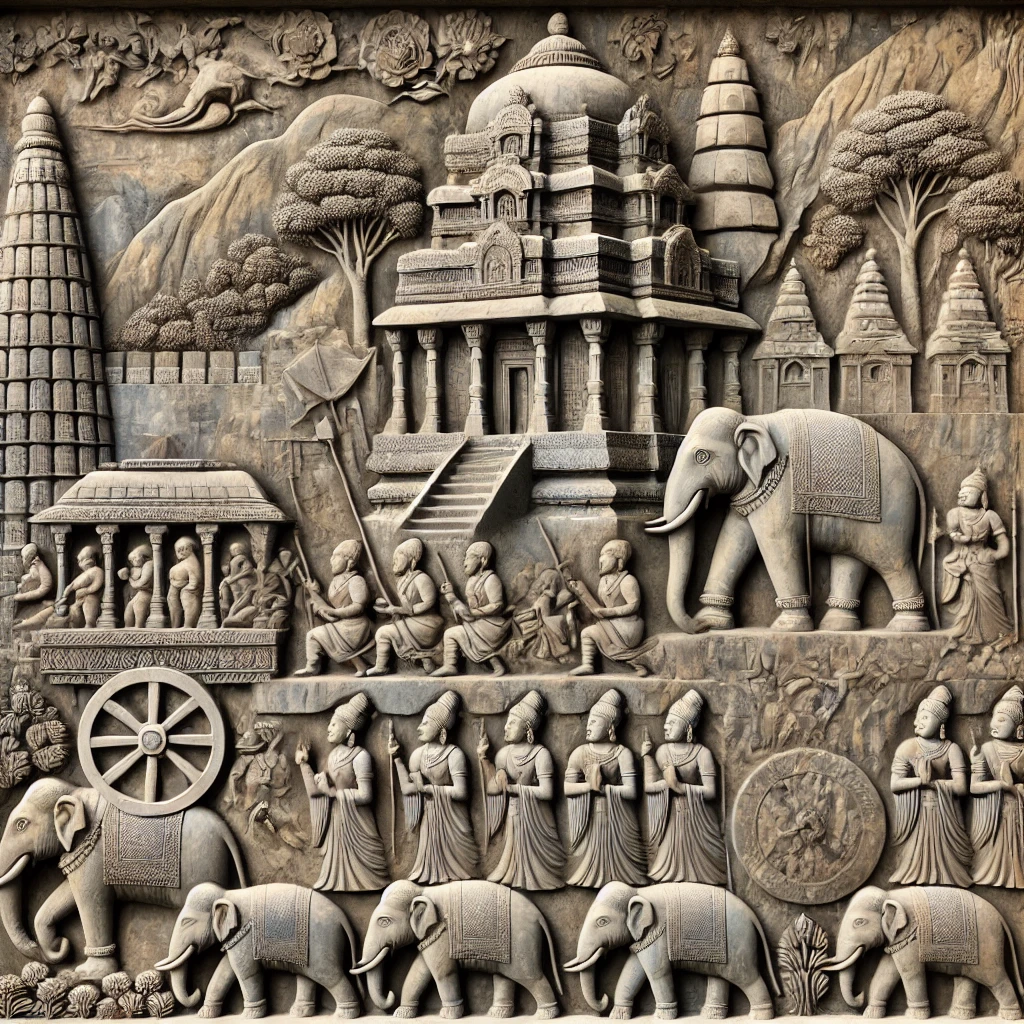
Today, Magadha’s historical sites, such as Bodh Gaya, Nalanda, and Rajgir, draw pilgrims and tourists from around the world, serving as reminders of the kingdom’s lasting impact on Indian and world history. The Kingdom of Magadha was one of the most powerful and influential kingdoms in ancient India, located in what is now the state of Bihar, India. Magadha’s history, culture, and political significance shaped the course of ancient Indian civilization and made it a central hub for religious and cultural developments.


